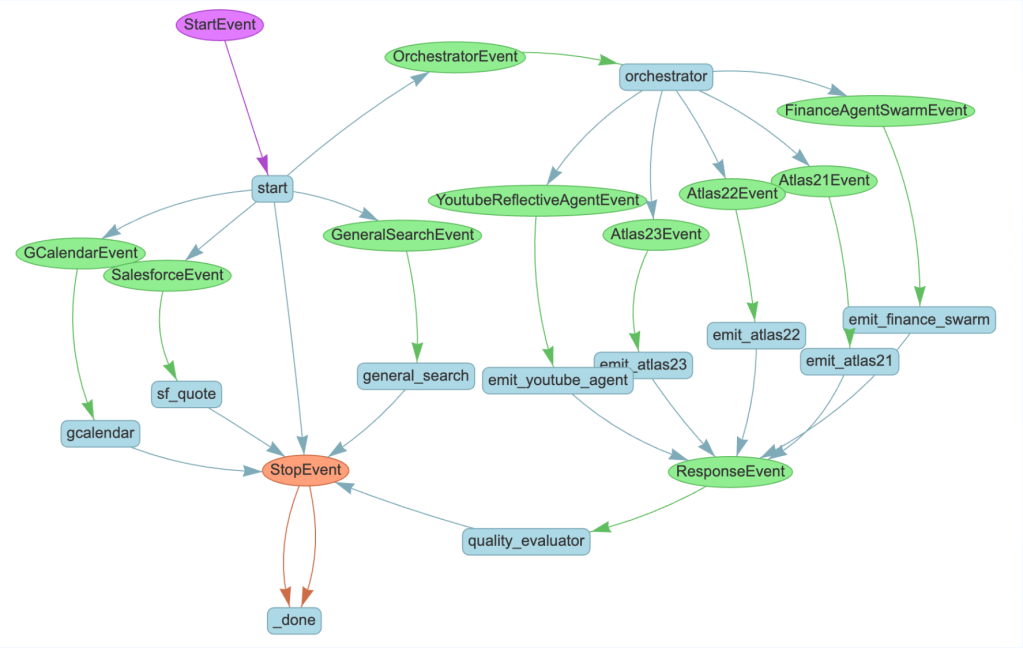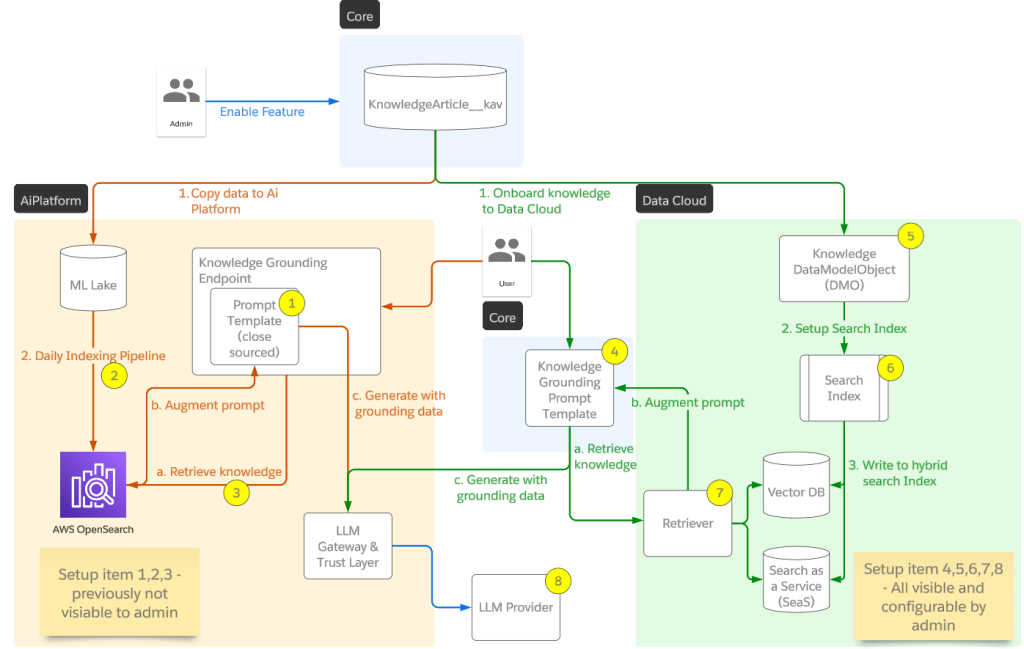
In our “Engineering Energizers” Q&A series, we explore the paths of engineering leaders pushing the boundaries of innovation. Today, we spotlight Phil Mui, Senior Vice President and Head of Products and Architecture for Salesforce AI Research. Phil’s team is instrumental in powering Agentforce, the agentic layer of the Salesforce platform for deploying autonomous AI agents across any business function. Agentforce includes a set of tools to create and customize agents as well as a suite of out-of-the-box agents.
Central to Agentforce’s architecture is the Atlas Reasoning Engine. This next-gen autonomous AI system enables agents to understand human intent and take action on the Salesforce platform. Acting as Agentforce’s brain, the Atlas Reasoning Engine employs reinforcement learning and feedback loops to provide accurate, context-sensitive responses. Agentforce helps customers enhance customer service and enterprise workflows by incorporating agentic reasoning.
Discover how Phil’s team tackled the challenges of scaling AI agents, implementing modular updates without disrupting functionality, and ensuring high standards of security. These efforts have enabled Agentforce to deliver powerful, reliable solutions across a diverse range of use cases.

What is the Atlas Reasoning Engine and how does it relate to your team’s mission?
Incubated within Salesforce AI Research, the Atlas Reasoning Engine is set to revolutionize enterprise workflows through advanced, deliberative, autonomous agents that utilize “System 2” inference time reasoning. These agents assist Salesforce clients by deeply understanding user queries, interpreting data, responding to inputs, and selecting and executing actions, thereby simplifying processes across customer service, sales, and operations. Built with asynchronous, event-driven, graph-based workflows and concurrent design principles, the Atlas Reasoning Engine employs cooperative agent swarms. This enables users and companies to automate repetitive tasks, reduce response times, and enhance accuracy, leading to significant productivity gains.
AI Research’s incubation team aims to expand Salesforce’s AI ecosystem by developing a sophisticated agent orchestration and reasoning system that tackles complex business challenges. Each Atlas Reasoning Engine agent, coordinated with a concierge orchestrator, reasons deliberatively with self-reflection toward specific tasks, all guarded by event-driven workflows. Early pilots of the Atlas Reasoning Engine have demonstrated impressive results, such as a 2x increase in response relevance and a 33% increase in end-to-end accuracy in customer service applications compared to competitors’ solutions and customer in-house or ‘DIY’ systems.
What core components define an “agent” in the Atlas Reasoning Engine, and how does it process and respond to user inputs?
Generic agents are composed of three key components:
- State: Acts as both short-term and long-term memory, allowing agents to retain past interactions, user data, and relevant context. This enables agents to tailor responses based on historical data, providing a personalized experience.
- Flow: The logical framework guiding an agent’s actions, enabling it to determine the next steps in a workflow. It ensures that the agent follows a coherent and effective sequence of operations.
- Side Effects: Actions performed by agents to impact their environment, such as updating records or initiating tasks. Side effects allow agents to make tangible changes and progress within their operational context.
For instance, in a customer support scenario, an Atlas Reasoning Engine agent can recall recent customer interactions from its state, use flow logic to determine the most appropriate response, and apply side effects by logging the interaction or escalating the case if needed. Leveraging these components, agents can become contextually aware, responsive, and capable of managing complex workflows autonomously, thereby enhancing efficiency across various use cases.
The Atlas Reasoning Engine implements inference time “System 2” reasoning for Agentforce. It significantly improves accuracy and lowers hallucinations by bringing state-of-the-arts agentic knowledge retrieval techniques to our customers. It leverages and enables agents with five key attributes:
- Role: Defines the agent’s job or purpose.
- Data: Specifies the knowledge and information the agent can access.
- Actions: Outlines the capabilities and tasks the agent can perform.
- Guardrails: Sets boundaries and restrictions on agent actions.
- Channel: Determines where and how the agent operates.
In addition to reifying specific agents’ reasoning, the Atlas Reasoning Engine can also orchestrates across multiple agents in providing different POVs to response to a user query. The following is one such “Cognitive Architecture” that was useful for a specific use case for how we orchestrate across multiple agents.

Example of a specific cognitive architecture with event-driven, graph-based workflow that allows concurrent processing of tasks by the Atlas Reasoning Engine.
What was a notable technical challenge your team faced in developing the Atlas Reasoning Engine, and how did you overcome it?
One of the primary technical hurdles for the Atlas Reasoning Engine was implementing a declarative approach to agent creation, setting the foundation for modularity, extensibility, and ease of lifecycle management. Traditional “imperative” programming, where each action is defined through conditional statements and specific code paths is hard to scale beyond custom coding for every use case. Imperative agent creation requires custom code for each behavior, making agent creation labor-intensive and inflexible.
To overcome this, the team developed a declarative approach using YAML configuration files. This declarative method allows engineers to define agent roles, behaviors, and states without writing extensive code, focusing on what agents should do rather than how they do it.
Now, agents can be created by simply specifying actions within YAML files, enabling fast deployment. Declarative agent creation and lifecycle management greatly improved scalability and adaptability, enabling efficient agent deployment across various roles and workflows. The flexibility of this approach allows Atlas agents to meet new demands more effectively, bringing customized agent configurations online as business needs change.
How does the Atlas Reasoning Engine handle scalability and coherence across distributed systems?
To ensure scalability and maintain coherence across distributed systems, the Atlas Reasoning Engine is designed with an asynchronous, event-driven architecture. In earlier attempts, achieving scalability was challenging due to synchronous, tightly coupled components that caused bottlenecks when handling multiple simultaneous tasks. To address this, the team adopted a publish-subscribe event-driven approach, decoupling component nodes of strongly typed functions and allowing each function within the Atlas Reasoning Engine to operate coherently but somewhat independently. This approach enables the Atlas Reasoning Engine to scale dynamically as new resources are added, without requiring major code changes.
This Atlas cognitive architecture enables concurrent tasks in parallel across (functions) nodes, facilitating immediate scaling across Salesforce’s global infrastructure. This design enables the Atlas Reasoning Engine agents to scale across geographically dispersed processes and data centers, catering to companies with a global presence. The asynchronous, distributed setup ensures consistent and reliable performance, regardless of location or fluctuations in demand.
How does the Atlas Reasoning Engine manage modular enhancements to ensure that updates in one area do not impact others?
The Atlas Reasoning Engine was architected with a focus on maintainable, scalable design. At its core, the system operates like a well-organized city where different neighborhoods (modules) function independently while working together through established protocols. Each module is essentially a self-contained service that handles a specific task – whether that’s retrieving information, processing user inputs, or generating responses.
The key to the Atlas Reasoning Engine’s stability lies in how these modules communicate. Rather than being directly dependent on each other, they interact through strongly typed well-publicized interfaces, similar to how different departments in a large organization might communicate through standardized forms and procedures. This approach means that when the team needs to upgrade or modify one component — say, improving the way the Atlas Reasoning Engine retrieves information — they can do so without disrupting other parts of the system.
This architecture pays dividends in several ways. Feature teams can work independently on different modules without stepping on each other’s toes. New capabilities can be added by simply plugging in new modules, similar to adding new apps to a smartphone. When usage spikes occur, individual components can be scaled up independently, ensuring efficient resource utilization. Most importantly, this design allows the Atlas Reasoning Engine to continuously evolve and improve while maintaining its reliability and performance.
How do you ensure that the Atlas Reasoning Engine maintains high standards of security and trust, especially during rapid deployment?
Salesforce’s Hyperforce framework serves as the foundation for the Atlas Reasoning Engine, integrating robust security measures that meet Salesforce’s trust standards. Hyperforce enforces stringent authentication, authorization, and container management protocols, ensuring continuous data protection. Security is embedded into the Atlas Reasoning Engine from the outset, with each component complying with Salesforce’s compliance requirements.
To strike a balance between speed and security, the team introduced the Atlas Reasoning Engine in controlled phases, initially deploying it to five major clients in high-security industries. This phased approach allowed for comprehensive security testing under real-world conditions, ensuring reliability. For example, each deployment phase undergoes rigorous validation checks to minimize potential vulnerabilities. By leveraging Hyperforce’s safeguards and employing phased rollouts, the Atlas Reasoning Engine provides clients with secure and rapid deployment of AI-driven solutions within Salesforce’s rigorous framework.
Could you share specific examples of how the Atlas Reasoning Engine was customized to meet unique client needs?
The Atlas Reasoning Engine was evaluated by one of largest human resources software companies seeking advanced AI capabilities. Collaborating closely with AI Research’s Atlas Reasoning Engine team, the company assigned two internal scrum teams to aid in integration, enabling Salesforce to customize the Atlas Reasoning Engine to meet its unique requirements. This customization resulted in a 30% increase in the company’s processing efficiency, highlighting the system’s adaptability.
Another example: one of the world’s largest travel and entertainment companies struggled with low answer relevance rates in its existing AI and knowledge system built with OpenAI in Azure. It put the Atlas Reasoning Engine to the test and saw relevance metrics nearly doubled. These customized solutions illustrate the Atlas Reasoning Engine’s ability to address specific operational challenges across different industries, delivering tangible improvements in various sectors.
Learn More
- Want to dive deeper into the Atlas Reasoning Engine? Check out this blog.
- Stay connected — join our Talent Community!
- Check out our Technology and Product teams to learn how you can get involved.






